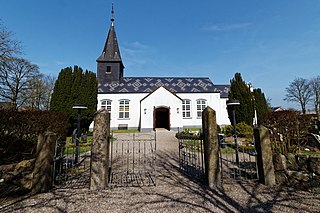
Neuengamme was a network of Nazi concentration camps in northern Germany that consisted of the main camp, Neuengamme, and more than 85 satellite camps. Established in 1938 near the village of Neuengamme in the Bergedorf district of Hamburg, the Neuengamme camp became the largest concentration camp in Northwest Germany. Over 100,000 prisoners came through Neuengamme and its subcamps, 24 of which were for women. The verified death toll is 42,900: 14,000 in the main camp, 12,800 in the subcamps, and 16,100 in the death marches and bombings during the final weeks of World War II. Following Germany's defeat in 1945, the British Army used the site as an internment camp for SS and other Nazi officials. In 1948, the British transferred the land to the Free Hanseatic City of Hamburg, which summarily demolished the camp's wooden barracks and built in its stead a prison cell block, converting the former concentration camp site into two state prisons operated by the Hamburg authorities from 1950 to 2004. Following protests by various groups of survivors and allies, the site now serves as a memorial. It is situated 15 km southeast of the centre of Hamburg.

For most of its 1,200 year history, Bremen was an independent city within the confederal jurisdiction of the Holy Roman Empire. In the late Middle Ages, its governing merchant guilds were at the centre of the Hanseatic League, which sought to monopolise the North Sea and Baltic trade. To establish and confirm its independence, the city had to contend first with the Prince-Archbishop of Bremen, and then with the Swedes, who had become the masters of the surrounding, former episcopal, duchies after the Thirty Years' War.

The Valentin submarine factory is a protective shelter on the Weser River at the Bremen suburb of Rekum, built to protect German U-boats during World War II. The factory was under construction from 1943 to March 1945 using forced labour, but was damaged by air-raids and unfinished by the end of the war. The Valentin factory was the largest fortified U-boat facility in Germany, and was second only to those built at Brest in France.

Ladelund is a municipality in the district of Nordfriesland, in Schleswig-Holstein, in northern Germany.
The following is a timeline of the history of the city of Vienna, Austria.
The following is a timeline of the history of the German city of Leipzig.
The following is a timeline of the history of the city of Dresden, Saxony, Germany.
The following is a timeline of the history of the city of Cologne, Germany.

Gertrud Elli Heise was a female guard and later, SS overseer at several concentration camps during the Second World War. Heise was born in Berlin, Germany. She was tried for war crimes in 1946.
The following is a timeline of the history of the city of Nuremberg, Germany.
The following is a timeline of the history of the city of Hamburg, Germany.
The following is a timeline of the history of the city of Lübeck, Schleswig-Holstein, Germany.

The following is a timeline of the history of the city of Braunschweig (Brunswick), Germany.
The following is a timeline of the history of the city of Hanover, Germany.
The following is a timeline of the history of the city of Chemnitz, Germany.
The following is a timeline of the history of the city of Mannheim, Germany.
The following is a timeline of the history of the city of Würzburg, Bavaria, Germany.
The following is a timeline of the history of the city of Linz, Austria.
The following is a timeline of the history of the city of Salzburg, Austria.








